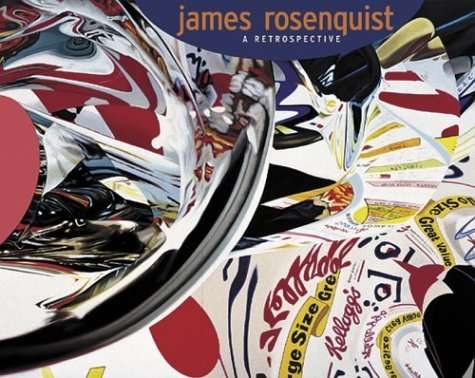
JAMES ROSENQUIST: A Retrospective ( Guggenheim Museum )
Check my rate
| Main centres: | 1-3 business days |
| Regional areas: | 3-4 business days |
| Remote areas: | 3-5 business days |

| Main centres: | 1-3 business days |
| Regional areas: | 3-4 business days |
| Remote areas: | 3-5 business days |
Published by Guggenheim Museum Publications, New York, 2003, softcover, index of works, 416 pages,, full page photographic imagery, landscape format, 29.6 cms x 25 cms x 3.9 cms, condition; as new.
Lipsticks, automobiles, dishwashers, men in business suits, spaghetti, rockets, airplanes, hairdryers, ice cream cones and pigtailed girls. James Rosenquist has always known how to combine these seemingly disparate but always all-American elements into whirlwind, billboard-sized collages of airbrushed surreal euphoria, slamming colors, patterns and objects into one another with the eye of an advertising man and the heart of a Pop artist. This momentous catalogue, published to accompany the first in-depth survey of the artist's work since 1972, will give long-overdue, in-depth attention to Rosenquist's singular achievement in American art. Extensive illustrations cover major works in diverse media, including work on paper that reveals the artist's process, as well as extensive new and archival photography. Essays focus on areas that have only been superficially addressed in the literature to date, bringing the level of Rosenquist scholarship up to that of his Pop Art contemporaries. Curator Walter Hopps provides an overview of the artist's career; Julia Blaut considers the artist's source collages in the context of 20th-century collage; Ruth E. Fine addresses Rosenquist's prints; art collector and former aeronautics researcher Eugene E. Epstein relates the artist's work to scientific phenomena. Also included are a definitive biography, exhibition history and illustrated chronology.
Rosenquist's work was the subject of several gallery and museum exhibitions, both in the United States and abroad. The Guggenheim Museum organized a full-career retrospective in 2003, which travelled internationally, and was organized by curators Walter Hopps and Sarah Bancroft.
James Rosenquistwas an American artist and one of the proponents of the pop art movement. Drawing from his background working in sign painting, Rosenquist's pieces often explored the role of advertising and consumer culture in art and society, utilizing techniques he learned making commercial art to depict popular cultural icons and mundane everyday objects. While his works have often been compared to those from other key figures of the pop art movement, such as Andy Warhol and Roy Lichtenstein, Rosenquist's pieces were unique in the way that they often employed elements of surrealism using fragments of advertisements and cultural imagery to emphasize the overwhelming nature of ads
This catalogue is beautifully illustrated. The book also includes three essays providing interesting information on Rosenquist's career and artistic techniques. It's fascinating to see how he planned his paintings with preparatory collages.